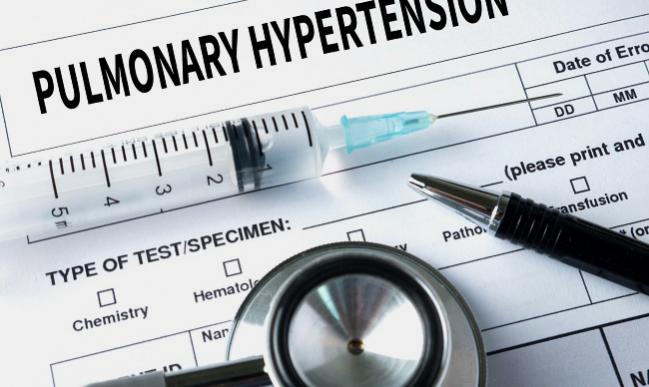Pulmonary Hypertension at Baseline Doesn’t Raise Mortality After TAVR
The condition should not preclude TAVR and resolves in most patients after intervention, a multicenter study reports.

More than three-quarters of patients undergoing TAVR present with some degree of pulmonary hypertension, but this has no bearing on subsequent mortality, researchers have found. Rather, what matters most is whether the condition persists after TAVR.
Pulmonary hypertension is one of the many risk factors that enter into decision-making for TAVR operators and heart teams, Alexander Lauten, MD (Charité–Universitätsmedizin Berlin, Germany), senior author of the new study, told TCTMD. In fact, pulmonary artery (PA) pressure is one element of the EuroSCORE, he said.
But based on the current results, pulmonary hypertension should not preclude TAVR, Lauten advised. “When you have a patient that you are planning TAVR in, you should not worry as much about elevated PA pressures at baseline. You should just check how the PA pressure develops afterwards, and if it goes down then everything is fine.”
In short, he added, “you don’t have to be afraid of it, even if it’s massively elevated.”
Lauten, along with lead author Brunilda Alushi, MD, PhD (Charité–Universitätsmedizin Berlin), and colleagues, outlined their findings in a paper published online recently in JACC: Cardiovascular Imaging.
Postdischarge Pulmonary Hypertension a Problem
For the four-center study, the investigators stratified 617 consecutive patients undergoing TAVR between 2009 and 2015 according to their baseline pulmonary artery systolic pressure (PASP): normal (< 34 mm Hg), mild-to-moderate (34 to < 46 mm Hg), and severe (≥ 46 mm Hg). All-cause mortality at a median follow-up of 370 days was similar among all three groups.
In all, 49% of patients had a significant regression of pulmonary hypertension after TAVR and 59% saw improvement by 1 year. PASP had decreased by the time of discharge both in patients with mild-to-moderate (by 3.0 ± 9.33 mm Hg) and those with severe pulmonary hypertension (by 12.0 ± 10.0 mm Hg). Decreases were also seen between baseline and 1 year for the mild-to-moderate (by 5.0 ± 9.7 mm Hg) and severe groups (by 18 ± 14.0 mm Hg).
Independent predictors of PASP reduction at discharge included LVEF > 40%, baseline PASP of ≥ 46 mm Hg, lack of moderate or worse tricuspid regurgitation, and logistic EuroSCORE < 25%.
Among patients with pulmonary hypertension at discharge, those whose hypertension did not regress were more likely to die by 30 days (HR 3.49; 95% CI 1.74-6.99), 1 year (HR 3.12; 95% CI 2.06-4.72), and maximal follow-up of 5.9 years (HR 2.47; 95% CI 1.74-3.49).
Unfortunately, while pulmonary hypertension is linked to poor prognosis, it’s not yet known what can be done to encourage normal PA pressures post-TAVR, Lauten observed.
But it’s possible that “early characterization of reversible or residual pulmonary hypertension may help to link TAVR outcomes with appropriate follow-up care,” the authors note in their paper. “Further studies are needed to assess whether persistent pulmonary hypertension can be improved by therapeutic strategies beyond TAVR.”
To TCTMD, Lauten pointed out that currently used risk scores are based on surgical aortic valve replacement, where pulmonary hypertension would have more of an impact than it does in less-invasive TAVR cases. “We need risk models that really predict the outcome for interventional approaches,” he said, adding that based on what’s seen here, baseline pulmonary hypertension should probably not be included in the mix.
Caitlin E. Cox is News Editor of TCTMD and Associate Director, Editorial Content at the Cardiovascular Research Foundation. She produces the…
Read Full BioSources
Alushi B, Beckhoff F, Leistner D, et al. Pulmonary hypertension in patients with severe aortic stenosis: prognostic impact after transcatheter aortic valve replacement. J Am Coll Cardiol Img. 2018;Epub ahead of print.
Disclosures
- Alushi reports no relevant conflicts of interest.
- Lauten reports receiving grants from Edwards Lifesciences and Abbott Vascular unrelated to the current study.


Comments